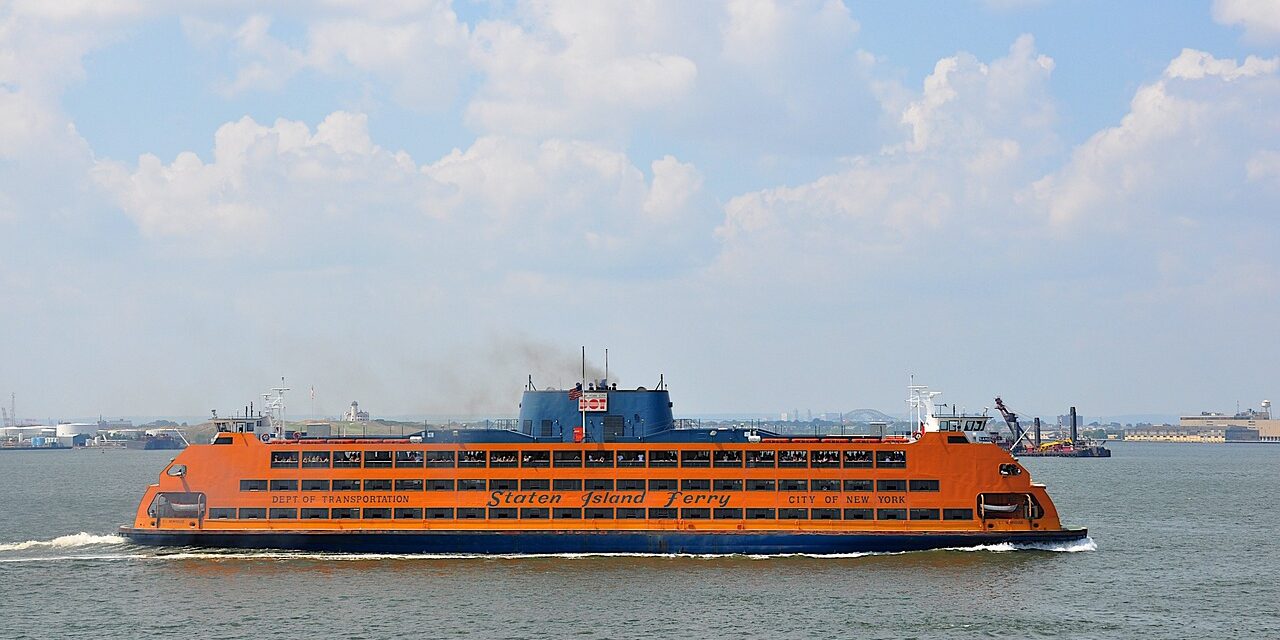Staten Island, the southernmost borough of New York City, boasts a rich and diverse history, evolving from its early days of indigenous habitation to its current role as a vibrant urban community.
From the first sighting by European explorers to its consolidation with New York City, Staten Island’s history is marked by incredibly significant events and developments.
Below, we explore the fascinating history of Staten Island, New York, covering its foundation, critical historical events, and notable landmarks.
Table of Contents
Early History
Indigenous Inhabitants and European Discovery
The Lenape Native Americans originally inhabited Staten Island.
- The island was first sighted by Giovanni da Verrazzano in 1524.
- The Dutch attempted to establish various settlements in the early 17th century, naming it Staaten Eylandt, but faced resistance from the Native Americans.
- Permanent European settlement began in 1661 when the Dutch established Oude Dorp (Old Town) near South Beach.
The island’s strategic location made it a focal point for early colonial conflicts and trade.
Colonial Period
Staten Island played a prominent role during the colonial period.
- 1664, the English took control, renaming the island to honor the Duke of Richmond.
- The island’s population remained relatively small, with a focus on agriculture and fishing.
- Staten Island was a strategic military location during the Revolutionary War. British troops occupied the island and used it as a base of operations.
The colonial period set the stage for Staten Island’s later development as part of New York City.
19th Century Development
Industrialization and Urban Growth
In the 19th century, they brought industrialization and urban growth to Staten Island.
- The opening of the Staten Island Railroad in 1860 and the construction of the Staten Island Ferry in 1817 spurred economic development.
- The island saw the establishment of significant industrial facilities, including the Procter & Gamble factory in 1907.
This period marked the transition from a rural community to an increasingly industrial and suburban area.
Consolidation with New York City
Staten Island was consolidated with New York City in 1898.
- This move aimed to improve infrastructure and public services but was met with mixed reactions from residents.
- The Verrazzano-Narrows Bridge, completed in 1964, linked Staten Island directly to Brooklyn, further integrating it into the city’s transportation network.
Despite ongoing challenges, consolidation facilitated Staten Island’s integration into the larger metropolitan area.
20th Century and Modern Era
Population Growth and Development
Staten Island experienced significant population growth and development throughout the 20th century.
- The island’s population grew from 85,969 in 1910 to 492,925 by 2022.
- Significant developments included the establishment of the Staten Island Mall, the Staten Island Expressway, and various educational institutions, such as the College of Staten Island.
Modern infrastructure and amenities have supported the island’s growth as a suburban community within New York City.
Environmental and Cultural Landmarks
Staten Island is known for its extensive parklands and cultural landmarks.
- The island is home to over 12,300 acres of protected parkland and more than 170 parks, earning it the nickname “the borough of parks.”
- Notable sites include the Staten Island Greenbelt, Historic Richmond Town, and the Staten Island Zoo.
These landmarks not only highlight Staten Island’s rich history but also its commitment to preserving its natural and cultural heritage.
This dedication is something to be appreciated and celebrated.
Notable Landmarks
Verrazzano-Narrows Bridge
The Verrazzano-Narrows Bridge, completed in 1964, is a significant landmark connecting Staten Island to Brooklyn.
- It was the longest suspension bridge in the world at its completion.
- The bridge significantly improved transportation and accessibility for Staten Island residents.
The Verrazzano-Narrows Bridge symbolizes the island’s connectivity and growth.
Historic Richmond Town
Historic Richmond Town is alive and well as a living history village and museum complex.
- It features 28 historic buildings and offers a glimpse into 300 years of Staten Island’s history.
- The complex is an educational and cultural hub, showcasing the island’s colonial and post-colonial past.
Historic Richmond Town preserves and celebrates Staten Island’s rich historical heritage.
Governance
Municipal Structure
Staten Island operates under the borough system of New York City.
- The borough president, currently Vito Fossella, plays a key role in local governance.
- The borough is also represented in the New York City Council and has its district attorney.
This governance model ensures local representation within the broader framework of New York City.
Demographics and Growth
Population
Staten Island is home to a diverse and growing population, a testament to its appeal as a place to live and work. This diversity and growth make Staten Island a vibrant and inclusive community.
- As of the 2022 census, the population was 492,925.
- The island’s suburban character and extensive parklands attract many residents.
Diverse demographics and steady growth reflect Staten Island’s appeal as a place to live and work.
Staten Island’s history is a testament to its resilience and adaptability. It evolved from a strategic colonial settlement to a dynamic urban community.
By preserving its historical landmarks and investing in the future, Staten Island continues to honor its past while looking forward to continued growth and development. Its ability to transform and thrive over the centuries is truly inspiring.
Staten Island Q&A
Q: When was Staten Island first settled by Europeans?
A: Staten Island was first settled by Dutch colonists in 1661 with the establishment of Oude Dorp (Old Town). This settlement followed earlier exploration by Giovanni da Verrazzano in 1524 and attempts by the Dutch to establish settlements in the early 17th century.
Q: Who were the original inhabitants of Staten Island?
A: The original inhabitants of Staten Island were the Lenape Native Americans. The Raritans and Unamis tribes primarily populated the island until European settlers arrived in the 17th century.
Q: What role did Staten Island play during the American Revolutionary War?
A: Staten Island served as a strategic military location during the Revolutionary War. British troops occupied the island, using it as a base for operations and launching attacks on American forces.
Q: How did Staten Island’s economy evolve in the 19th century?
A: The 19th century saw significant industrialization and urban growth on Staten Island. The development of the Staten Island Railroad and the Staten Island Ferry spurred economic activity, and the island became home to major industrial facilities like the Procter & Gamble factory.
Q: What significant changes occurred in Staten Island post-consolidation with New York City?
A: Post-consolidation, Staten Island saw improvements in infrastructure and public services. The opening of the Verrazzano-Narrows Bridge in 1964 further integrated the island into New York City’s transportation network, facilitating growth and development.
Q: What are some notable historical landmarks on Staten Island?
A: Notable landmarks include the Verrazzano-Narrows Bridge, Historic Richmond Town, and the Staten Island Greenbelt, highlighting the island’s historical and environmental significance.
Q: How is Staten Island governed?
A: Staten Island is one of New York City’s five boroughs. It has a borough president and representation in the New York City Council. The borough president plays a key role in local governance and advocacy for residents.
Q: What is the current population of Staten Island?
A: As of the 2022 census, Staten Island’s population was 492,925. The island continues to attract residents with its suburban character and extensive parklands.
Staten Island’s rich history and continuous development make it a vibrant and thriving community.
By preserving its historical heritage and investing in future growth, the island remains a significant part of New York City’s history and modern landscape.





